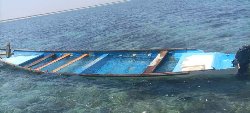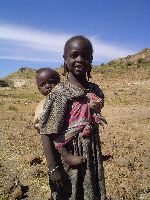New IFJ Report: Free Speech in Peril in South Asia
New IFJ Report: Free Speech in Peril in South Asia
Media Release: South Asia
May 3, 2011
The International Federation of Journalists (IFJ) today announces the release of Free Speech in Peril, its ninth press freedom report for South Asia, a comprehensive analysis of the professional challenges and hazards faced by journalists in the past year in Afghanistan, Bangladesh, Bhutan, India, the Maldives, Nepal, Pakistan and Sri Lanka.
“On World Press Freedom Day, we salute courageous journalists and media workers across South Asia who work tirelessly every day to uphold press freedom at significant personal risk,” IFJ Asia-Pacific Director Jacqueline Park said.
“In most countries in the region the past year has been less lethal for journalists than earlier years. But the deteriorating situation in Pakistan is of urgent concern, as are widespread forms of official and unofficial suppression of media reporting.
“The killing of Osama Bin Laden on May 1 and the recent popular uprisings in the Middle East and North Africa may also present fresh challenges to journalists and media professionals in South Asia.”
Produced in association with the IFJ’s partners and affiliates in the region, collectively known as the South Asia Media Solidarity Network (SAMSN), the 2010-11 report highlights the importance of maintaining and expanding regional and national networks that track media rights violations, and building organised power to defend and promote press freedom, freedom of association and the right to speak out.
The report notes that the challenges of securing decent wages and working conditions remain, and there are significant concerns regarding professional standards.
Journalism remains a hazardous pursuit in the context of Afghanistan’s insurgency. The emerging power-sharing compact among the country’s more powerful political figures seems premised upon each of them having a stake in the media industry. Though growing rapidly, the media in Afghanistan remains dependent on some form of subventions for survival, either from international donor agencies or local power cliques.
Unlike in years immediately past, when the most dangerous parts of Pakistan were those that felt the spillover effect from Afghanistan most acutely, the year from April 2010 saw Balochistan assume that position. The northern part of Pakistan also remains dangerous and the sources of violence here are less predictable and the range of threats greater. Investments in safety remain a priority for Pakistan’s journalists, though few among the media groups seem inclined to make the necessary commitment of resources.
Bangladesh is also coming out of a long background of authoritarian military rule and seeking a pathway toward stable electoral democracy. Disagreements still run deep within civil society and the media community on the legacy of the country’s war of liberation. These are played out occasionally in an accusatory tone in media reporting and harsh retaliation by political authorities. Frequent warnings are issued by government authorities about their intent to enforce a code of ethics for journalism. Bangladesh’s media community though has responded constructively and with some unity of purpose to these challenges.
Sri Lanka and Nepal are both coming out of years of conflict but along rather different trajectories. The political leadership in Sri Lanka continues to acknowledge the imperative of national reconciliation but there have been occasions when journalists have been prevented from attending the proceedings of the commission that is the main instrumentality of the process. As during the years of conflict, the cross-community dialogue remains weak, since the English and Sinhala language media are not seen to provide adequate coverage to testimonies rendered in Tamil to the commission.
Nepal’s politics has remained unsettled. Despite journalists’ bodies achieving far reaching legislative changes in the period of the interim constitution, these remain to be consolidated in practice. As in Sri Lanka, impunity for the worst crimes against journalists through the years of the war and the unsettled truce that followed remains an overwhelming reality. Despite having secured a law that protects their entitlements, Nepal’s journalists continue to work for low wages. Investments in quality and skills, though enjoined on media houses by the law, remain low or non-existent.
Bhutan and the Maldives, the two smallest countries in the region, are both in the process of political transformation, from an absolute monarchy in one case and a state of one-party rule in the other. Both face the difficulties of sustaining plural media in a context of modestly developed business infrastructures and low levels of advertising spending in the economy.
India’s journalists are in the midst of a campaign to ensure that the proposals of the most recent wage board for journalists and other newspaper employees are fully implemented. The wage board model of determining working conditions for newspaper workers, which has been adopted in other countries of the region, is under threat in its place of origin.
India’s journalists confronted serious ethical issues over the course of the year and came up with a credible analysis and understanding of the threat that “paid news” poses to the integrity of news gathering. Ongoing conflicts and insurgencies in the north-eastern states of India, Jammu and Kashmir and the central Indian region, continue to cast a long shadow over journalism.
The IFJ gratefully acknowledges the support of UNESCO in producing Free Speech in Peril: Press Freedom in South Asia 2010-11.
As in recent years, the report is divided into a narrative section which looks at each country individually, and an annex that lists the main instances of media rights violation that have come to notice over the year under review.
Access the report here: http://asiapacific.ifj.org/en/pages/ifj-asia-pacific-reports
ENDS


 UN News: Ceasefire The Only Way To End Killing And Injuring Of Children In Gaza
UN News: Ceasefire The Only Way To End Killing And Injuring Of Children In Gaza ICHRP: US-Japan-Philippines Trilateral Summit Makes The Philippines A Battlefield For US-China Conflict
ICHRP: US-Japan-Philippines Trilateral Summit Makes The Philippines A Battlefield For US-China Conflict East West Center: Environmental Journalist Alexander Kaufman Receives East-West Center’s Inaugural Melvin M.S. Goo Writing Fellowship
East West Center: Environmental Journalist Alexander Kaufman Receives East-West Center’s Inaugural Melvin M.S. Goo Writing Fellowship Compassion in World Farming: Octopus Farm Must Be Stopped, Say Campaigners
Compassion in World Farming: Octopus Farm Must Be Stopped, Say Campaigners UN News: Shipwreck Tragedy Off Djibouti Coast, Drone Attacks Continue At Ukraine Nuclear Plant, Madagascar Cyclone Update
UN News: Shipwreck Tragedy Off Djibouti Coast, Drone Attacks Continue At Ukraine Nuclear Plant, Madagascar Cyclone Update UN News: Aid Lifeline Reaches Sudan's Darfur Region In Bid To Avert ‘Hunger Catastrophe’
UN News: Aid Lifeline Reaches Sudan's Darfur Region In Bid To Avert ‘Hunger Catastrophe’